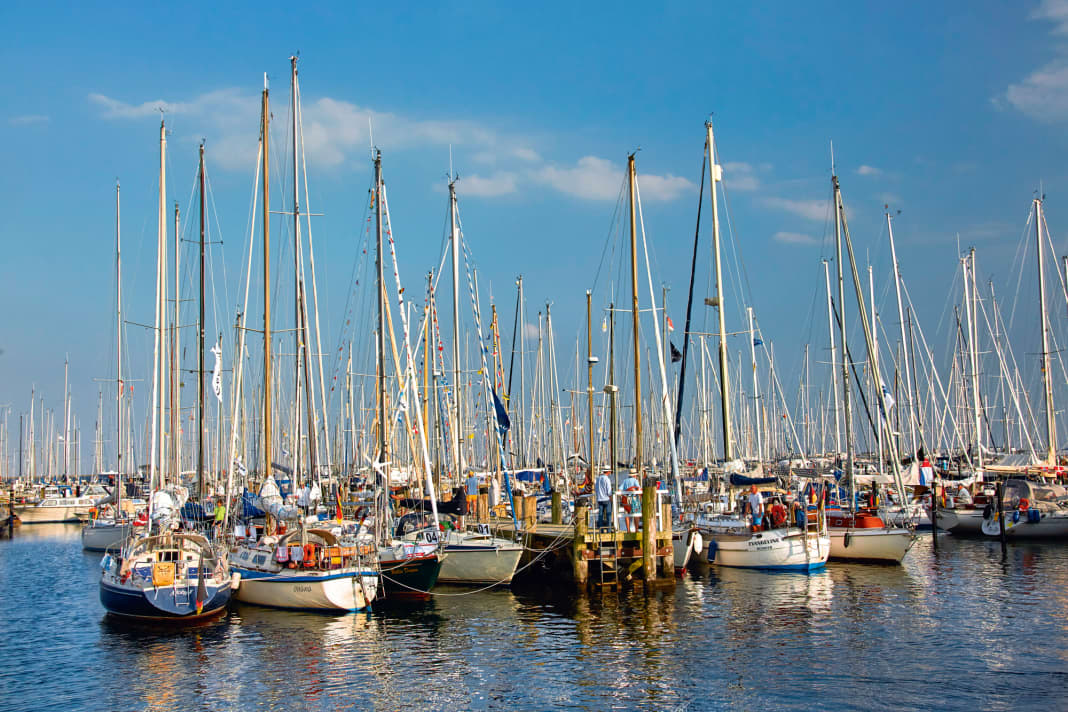





- Unusual places to moor
- 1. the equipment
- 2. the classic: lying in a parcel
- 3. for smaller boats: two in the box
- 4. into the box one behind the other
- 5. alongside the pit lane posts
- 6. between the packets
- 7. at the head of the bridge
- 8. courage to leave a gap alongside
- 9. move together lengthways
- 10. at a slipway, crane or petrol station
- 12. at the end of the pit lane
- 13. for commercial shipping
- 14. outside on the pier
- 15. with the bow at the head of the jetty
"There's no more room here" is often what you think when you enter a busy harbour - be it in the Danish South Sea or the Mediterranean. If you are put off by the full berths, you might turn round and try your luck elsewhere.
That can cause real stress! Sleeping in and second coffees in the cockpit are cancelled just to set off early enough. As soon as the sails are set, the race with the other crews to the next destination begins. Everyone wants to be one of the first to get one of the few free places on the jetty.
Some harbours are chronically full
It is true that there are some almost notorious harbours that are chronically overcrowded in summer. Marstal, Svendborg, Bogense or even smaller island harbours such as Samsø, Endelave or Anholt are among them. Sailors can expect overcrowded jetties there. Regular berths are generally not available for those who arrive in the evening.
However, there is no need for stress, everyone can organise their sailing day in a relaxed manner. In the evening, there is always a place for the boat. Even in crowded harbours. You just need to know where to look. And be prepared to moor in an unorthodox place if in doubt. It doesn't always have to be the regular box with stern piles and mooring lines.
Seeking dialogue
Of course, you should proceed with caution when searching for the last gap, for example by enquiring when the crew that you are parking would like to set sail again - so that they can then be on board. Ideally, the crew will then even actively support the manoeuvre. Experience shows that the reactions are much more often accommodating than hostile. After a successful docking, it is not uncommon to suddenly find yourself sitting in the cockpit chatting with your neighbours over a beer.
The harbour master should also be asked whether you are allowed to moor at the chosen spot. And because it is so unusually tight, the conditions in the harbour and the wind conditions must be taken into account even more carefully than usual so that there is no churning during the manoeuvre and the greatest possible safety at the berth.
The basic rule is: Have the courage to take a gap! Not least because you can then savour the sailing time on the water in a relaxed manner beforehand.
This article is part of a charter special. The contents:
Unusual places to moor
1. the equipment
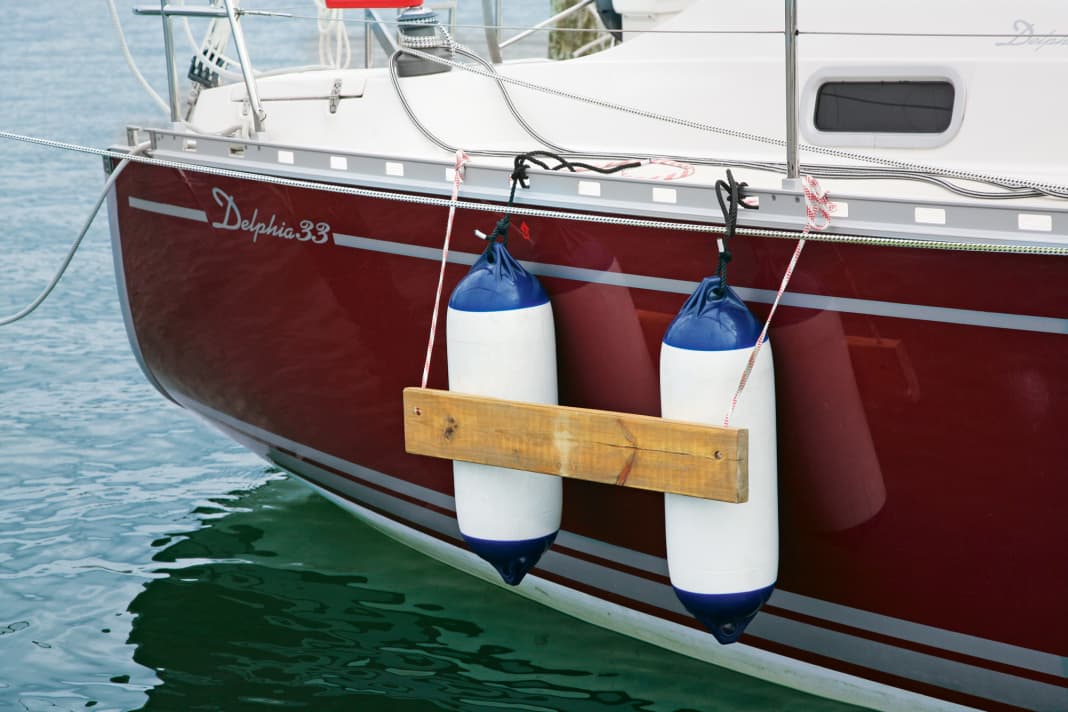



Few crews take a fender board with them on holiday. Admittedly, such a board is bulky, but it is ideal for mooring to poles. A dinghy can also be very helpful. Used as a ferry, you can moor in the pit lane without having access to land via the jetty or neighbouring yacht.
2. the classic: lying in a parcel
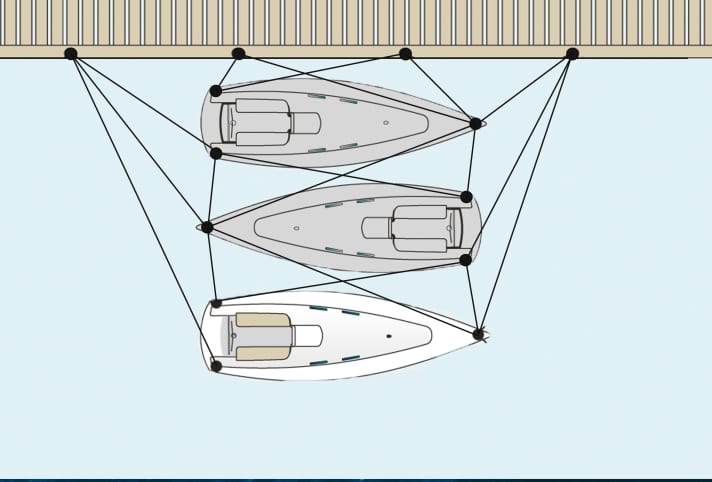
Of course, every skipper knows the situation: mooring alongside a yacht that is already moored at the jetty or in the last box. In summer, packages with three or even four rows are not uncommon. This works particularly well at the head of long jetties, as there are not always piles driven in for the frontal berths.
3. for smaller boats: two in the box

Box sizes have grown slowly but steadily over the last few decades along with the average size of yachts. Small boats are therefore sometimes moored with very long stern lines in boxes that are actually far too large because there were no more suitable ones available. Occasionally there is still enough space for a boat of the same size or smaller to go alongside. To do this, speak to the skipper of the boat already in the box and ask if he will release his stern line so that you can moor next to him with your own boat. Be careful when entering the box. You may have to enter at a slight angle.
4. into the box one behind the other

The manoeuvre assumes that a smaller vessel is moored in a large pit area. After consultation, you can then approach with the bow aft and go to the stern cleats of the vessel ahead with two bow lines and to the piles with additional lines. Or, if there is plenty of room, deploy a stern anchor. However, as you are then looking directly into the cockpit of the yacht ahead and also have to go over there, such solutions are more likely to be used by crews who know each other.
5. alongside the pit lane posts
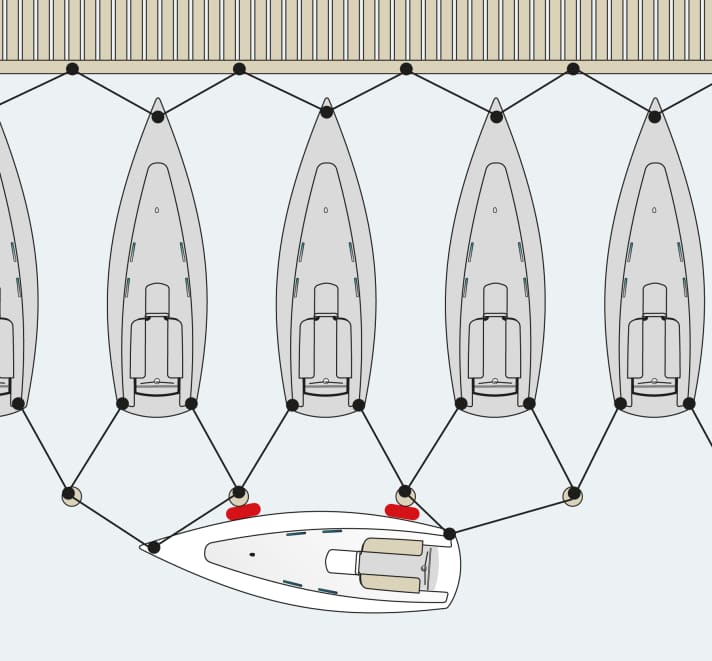
If you ask the box berth holders when they want to leave in the morning, you can park one or two boxes from the outside of the pile in the evening. To do this, deploy the fenders either with the fender board or two lines across and tie them down. The problem is then getting ashore. If you're lucky, you'll find a spot from which you can step onto the pier via the bow. Alternatively, use your own dinghy, SUP or similar as a jetty shuttle. If possible, look for a spot with an offshore wind. Then there is less risk of the fenders slipping on the piles at night.
6. between the packets

If there is a lack of space, the packs grow - the space between them can also be used if necessary. This has the advantage that the packet does not get any bigger and the crew can go ashore directly. However, the shore lines of the packet may have to be repositioned.
7. at the head of the bridge
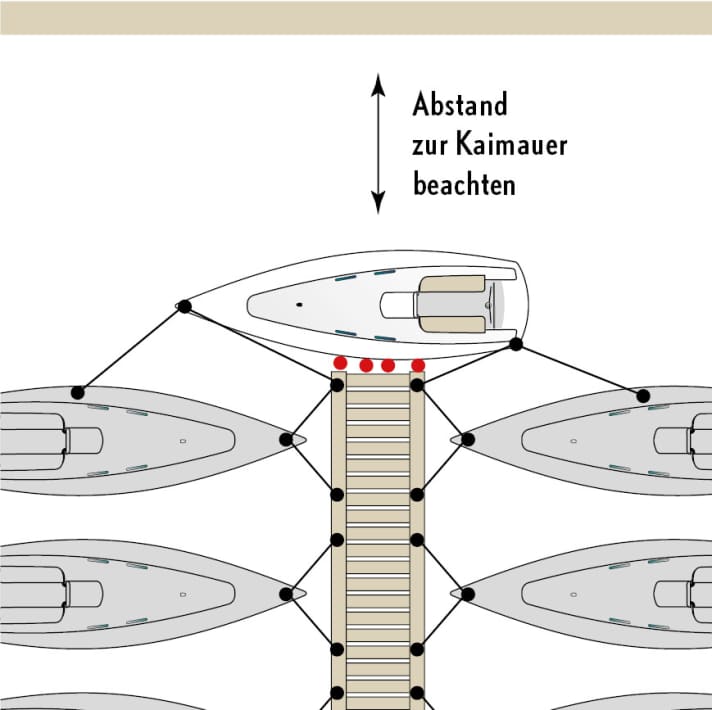
The narrow end of a jetty can be the solution for the night if no other berth can be found. The springs then go to the jetty, the fore and aft lines to the two yachts moored outside the jetty. Their skippers must of course agree to this.
8. courage to leave a gap alongside
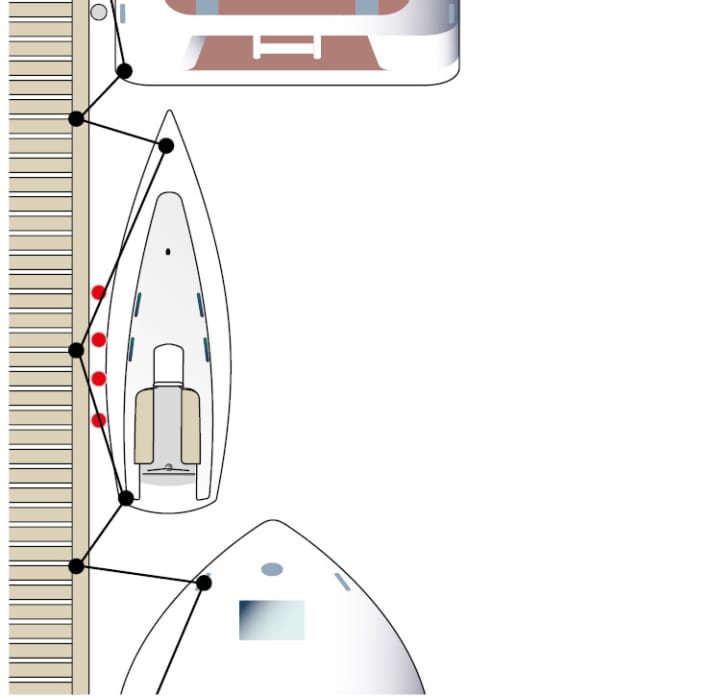
If two large sailing or motor yachts are alongside the jetty, a narrow gap between them may seem inaccessible - but it is actually a good berth. If you manoeuvre skilfully, you can moor comfortably at the jetty and even open up a small parcel for other incoming boats.
9. move together lengthways
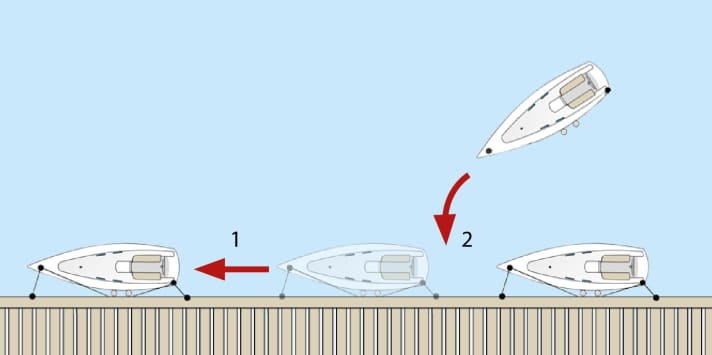
It is becoming increasingly common to see yachts moored one behind the other on a long alongside pier, leaving an unnecessary amount of space between the bow of one and the stern of the other. If it is then not possible to get into the berth next to it, for example because the approach would otherwise be blocked, the skippers should be asked to move up to the boat in front. It is often enough to move one boat forwards to make room for another behind it.
10. at a slipway, crane or petrol station
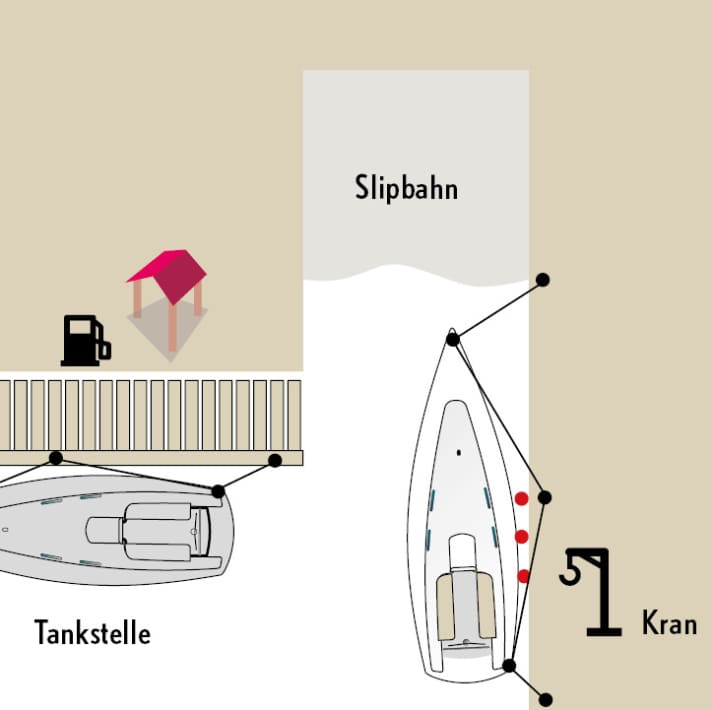
Berths next to the listed facilities must actually be kept free. Signs usually indicate this. But in many harbours, even the harbour masters generally tolerate mooring next to slipways or under the mast crane, at least later in the evening. Exception: The slipway is still needed in the evening for dinghy training by the local club. Anyone mooring in this way must be prepared to move the boat spontaneously if necessary. And be careful at petrol stations with EC machines: They can be used 24 hours a day, so they should always be free. But this is rarely necessary. Set off early the next morning!
11. use flat areas
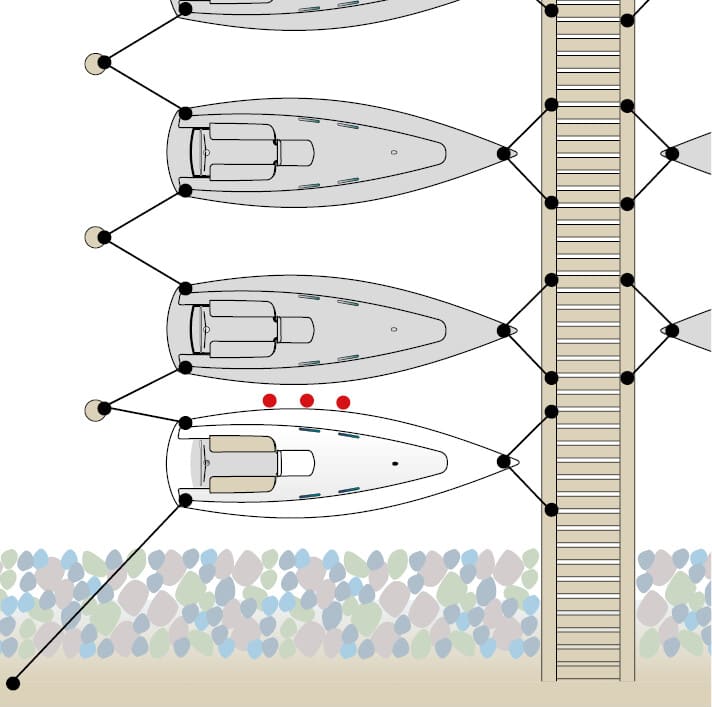
This variant is primarily an option for ships with a shallow or reducible draught. Also for very narrow or small yachts. The places are not entirely without risk, as it is often not clear how deep it is there. It should only be an option in offshore winds, and it is best for the skipper to explore the spot beforehand by checking the bottom with the bow on the last pole. Alternatively, he can first make a makeshift mooring somewhere and take a look at the chosen spot from shore. If there are a lot of stones, steam off again. If the bottom is soft, you can approach it carefully.
12. at the end of the pit lane
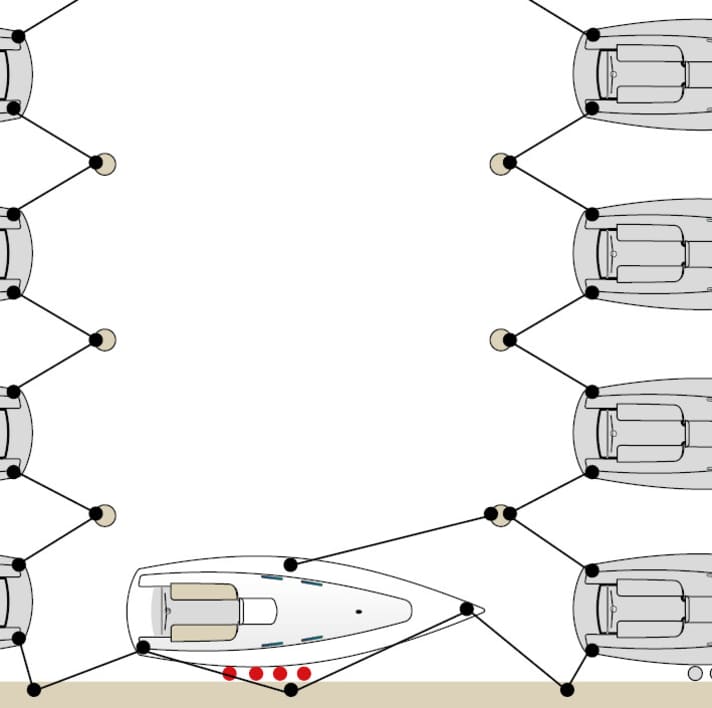
This is often a very comfortable spot as, unlike lying in the pit lane on piles, you don't have to cross other boats to get ashore, but can easily get ashore alongside. Important: Discuss with the skippers of the boats in the two pits you are blocking when they want to leave. And keep an eye on how shallow it gets. The ground rises at some of these inner harbours.
13. for commercial shipping
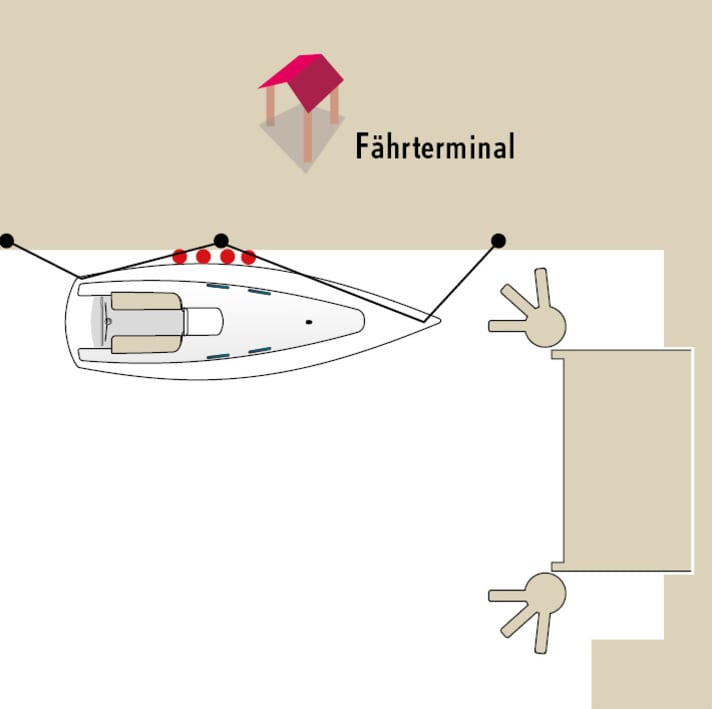
High bulkheads for ferries or supply vessels are not very inviting, and mooring is usually prohibited for pleasure craft. However, a closer look at the timetable or a chat with the staff on site may reveal that a yacht can moor here as an exception.
14. outside on the pier
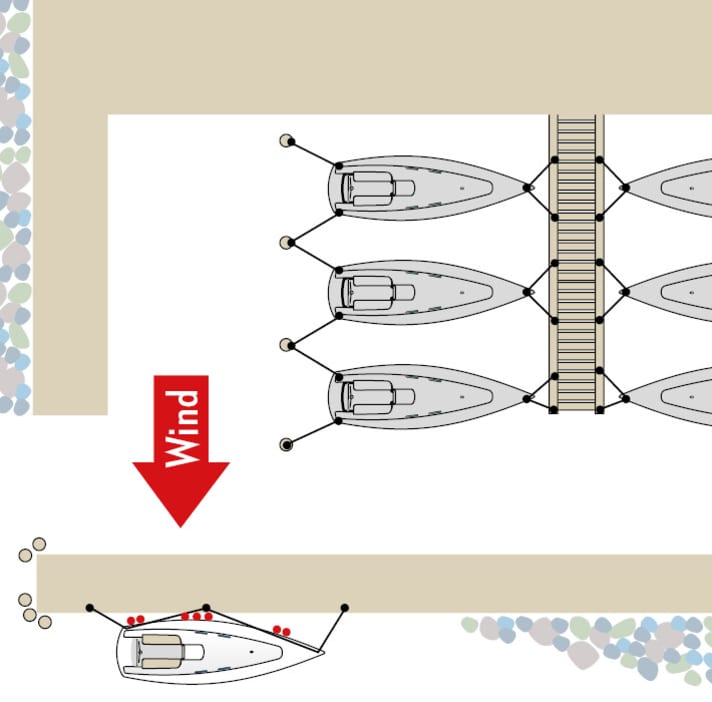
It's rare, but it does happen: There really isn't a single place left in the harbour. If the weather is calm or the wind is even offshore, you can sometimes lie on the outside of the breakwater. Especially if it is equipped with bollards or rings. Then you can go alongside or, for example, deploy the bow anchor and moor with the stern. Of course, it is important that it is deep enough in front of the breakwater and that you are not in the way of larger ships or ferries. In case of doubt, they can also cause a lot of swell. And: check carefully that there are no stones at the bottom of the pier that could jeopardise your rudder! One advantage: you can see immediately if a yacht is leaving and can take the opportunity to enter the harbour.
15. with the bow at the head of the jetty
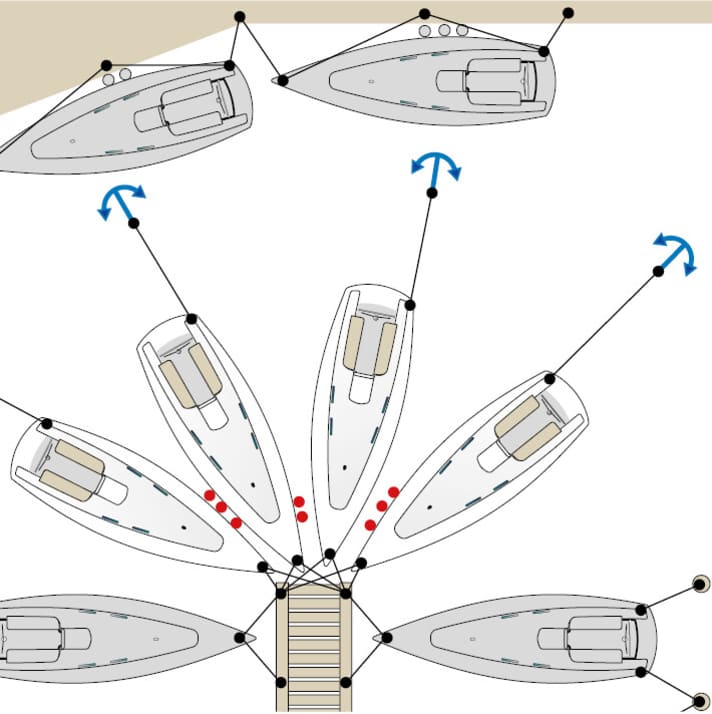
The narrow head end of a jetty can become a berth for many boats if they each deploy a stern anchor. Accordingly, there should be sufficient space behind the sterns so as not to block incoming and outgoing vessels. The fore line is attached to the jetty.

